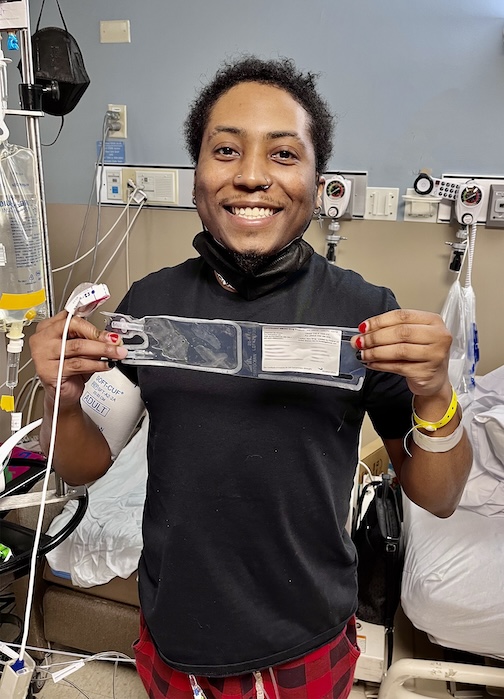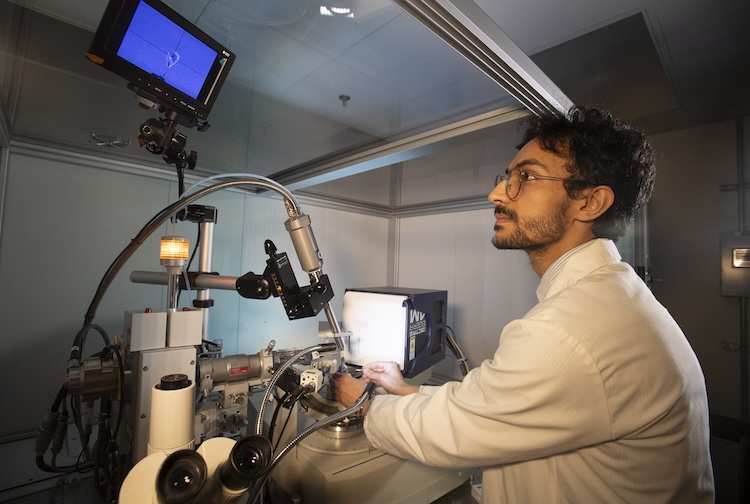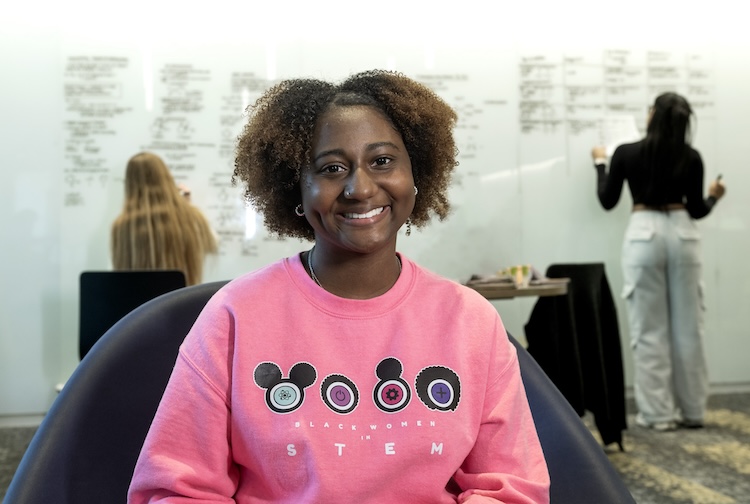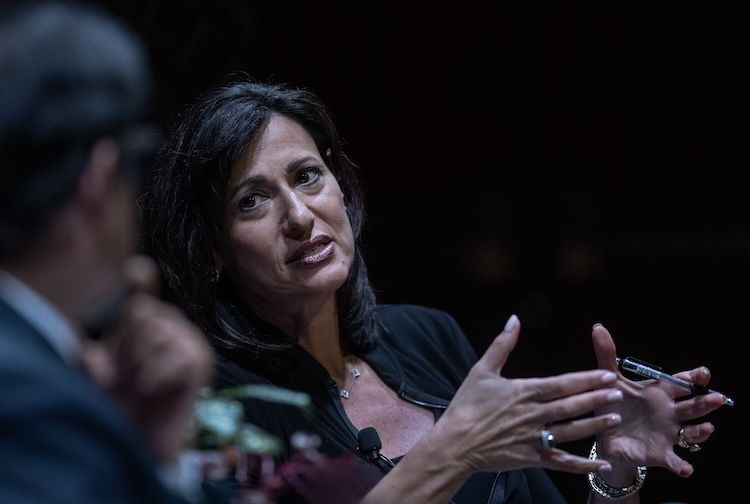
Promising new sickle cell therapy trialed at Children's Hospital of Richmond at VCU and VCU Medical Center
Sickle cell disease expert involved in the recent clinical trial shares how a new gene therapy will change the lives of people with the disease.
December 18, 2023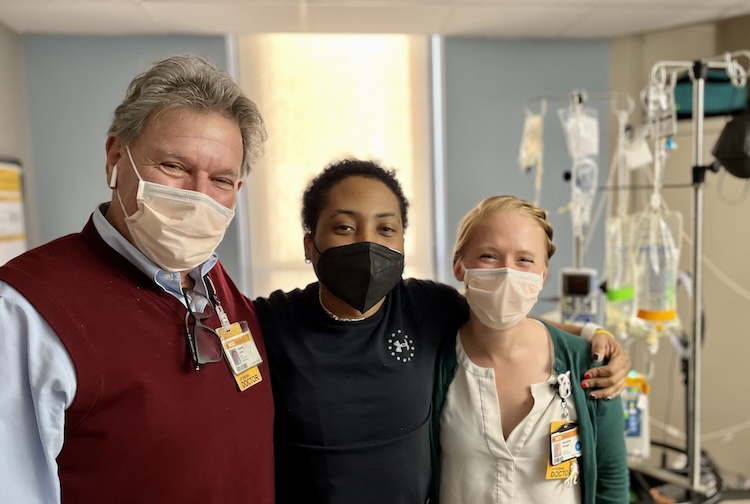 Walter Davis receives care from the pediatric and adult sickle cell disease teams at CHoR and VCU Health. (Left to right: Joseph Laver, M.D., Walter Davis; patient, and Beth Krieger, M.D. Both providers are hematology and oncology specialists at CHoR) (Children's Hospital of Richmond at VCU)
Walter Davis receives care from the pediatric and adult sickle cell disease teams at CHoR and VCU Health. (Left to right: Joseph Laver, M.D., Walter Davis; patient, and Beth Krieger, M.D. Both providers are hematology and oncology specialists at CHoR) (Children's Hospital of Richmond at VCU)
By Kate Marino
The U.S. Food and Drug Administration recently approved two gene therapies to treat sickle cell disease in people ages 12 and older – a gigantic step toward curing this often-debilitating disease. Children's Hospital of Richmond at VCU and VCU Medical Center were involved in the clinical trial that led to the approval of these products.
India Sisler, M.D., is interim division chief and clinical director of the Division of Hematology and Oncology and medical director of the pediatric comprehensive sickle cell center at CHoR. She explains how the new therapy works and why its approval is monumental.
What is sickle cell disease?
Sickle cell is the most common inherited blood disorder. Instead of red blood cells being circular and flexible, they’re sickle or crescent moon-shaped, stiff and sticky. This means they can clump together and get clogged in small blood vessels, preventing blood from flowing throughout the body and providing oxygen as it should. When parts of the body are deprived of oxygen, it can lead to pain crises, swelling, infection, organ damage and other serious consequences.How long has our participation in the clinical trial been in the works?
We enrolled our first patient, Walter Davis, almost two years ago, so we’ve been working toward this exciting milestone for quite some time.How does the treatment work?
Gene therapy works by changing the way the body makes hemoglobin which is one of the building blocks of red blood cells. Hemoglobin is the part of the red blood cell that is abnormal in patients with sickle cell disease.Using a process called peripheral blood stem cell collection, we isolate and pull out the patient’s stem cells. We then send those cells to a company that specializes in gene modification so they can change the way those cells produce hemoglobin. We work to knock the patient’s bone marrow out completely and give them their own stem cells back with the modified hemoglobin gene.
This is a multi-step process that involves meticulous planning and special care for the patient along the way.
Which patients qualify for this sickle cell treatment?
The FDA approval is for people with certain genotypes with recurrent vaso-occlusive crises, which occur when sickle cells block blood flow to the point of depriving tissues of oxygen and causing complications.
While treatment is only currently available to this certain subset of patients, our hope is that it will become more widely available in the near future. Clinical trials in children under 12 are still in process.
Walter Davis smiles as he completes another round of treatment as part of a clinical trial. (Children's Hospital of Richmond at VCU)
How would you describe Walter? Why was he a good candidate for this clinical trial?
Walter is a special young man. I took care of him in the pediatric setting before he transitioned to care with adult providers. He was a model patient. He took his medicines and came to his appointments. He was very motivated to keep himself healthy because he was too busy and social to be sick! He was on his high school football team. I call him Mr. Popular.As we see in many patients, as Walter got older he was having a lot of complications and pain, which made daily life difficult. What made him a great candidate was his motivation to improve his health in order to be the social, active young man he wanted to be. He was all-in and he’s doing so well now. Every time we see him, he’s almost in tears telling us the things he’s able to do and the new lease on life he feels like he has.
At this point Walter is done with treatment and cured of sickle cell. He will follow up with our transplant team so we can monitor him for any side effects – every couple months for now, then we’ll space out to a year. We don’t really know what to expect 20 years from now since this a new treatment, but it’s so promising and we’re thrilled to see Walter thriving.
Walter is an adult now. Why was collaboration between the pediatric and adult sickle cell teams at CHoR and VCU Health essential during this clinical trial?
Oftentimes in medicine new and exciting medical breakthroughs are first established in the adult population before it trickles to pediatrics. Pediatric bone marrow transplanters have long been the pioneers in seeking a cure for sickle cell disease. So in this case, the pediatric providers are the true experts in gene therapy. They are not only treating our pediatric patients, but young adults like Walter as well. Throughout his treatment, our pediatric transplanters collaborated closely with adult sickle cell providers Wally Smith, M.D., and Thokozeni Lipato, M.D., within VCU Health to ensure Walter received the absolute best pain management and coordination of services moving forward.Beth Krieger, M.D, a pediatric hematology and oncology specialist at CHoR, conducted advanced fellowship training with leading experts in the field of bone marrow transplant and cellular therapies at University of Minnesota, where she did a significant amount of transplant work for non-cancerous conditions. Her knowledge and expertise have been instrumental in Walter’s care during this study and in bringing curative therapy to CHoR.
Our sickle cell teams work hand-in-hand on a daily basis to help patients transition seamlessly from pediatric to adult care, so we’re accustomed to collaborating and know it is beneficial for everyone.
What criteria did CHoR and VCU Medical Center have to meet to be approved as a clinical trial site?
There were several criteria. Our apheresis unit had to qualify for collection and our stem cell transplant lab had to be inspected and certified. We had everything in place already, which made it much easier, but it has still been a huge team effort across many different units.What else is on the horizon?
Two different sickle cell gene therapy products were actually FDA approved – the one we trialed and another one – and we are working to begin offering both of them here. Our hope is also that many more patients will qualify in the near future and that we can begin curing people of sickle cell disease without them having to experience the extreme pain and other side effects of vaso-occlusive crises.
Similar gene therapy has also been FDA approved for beta thalassemia, another red blood cell disease. It’s much less common than sickle cell, but we have patients undergoing this clinical treatment and it has the potential to be equally life changing.

